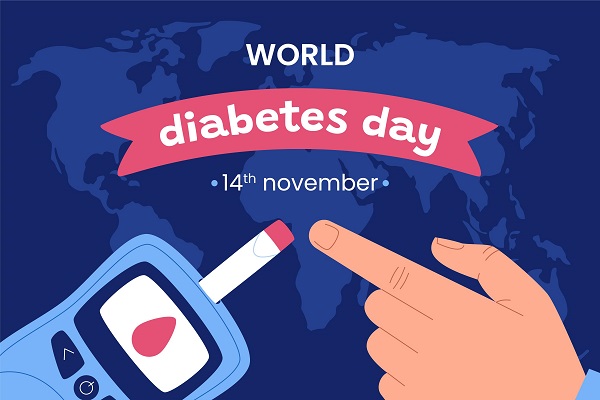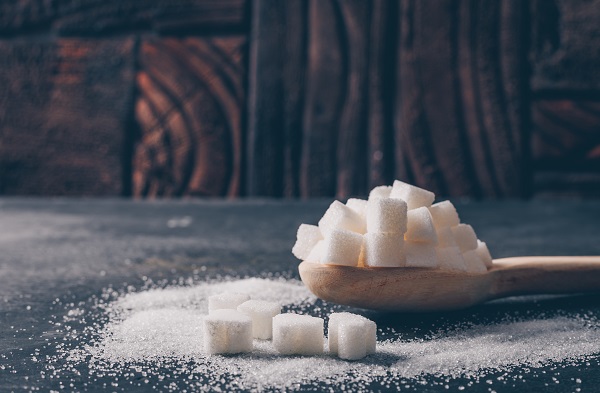Contributed by- Healthians Team
In common man’s language, ‘Diabetes’ is called the sugar disease, a medical condition when the glucose level of our blood goes high. The main type of glucose found in our body is blood glucose and is the chief source of energy. Blood carries glucose to different cells in the body to be used for energy. This blood glucose majorly comes from the food we eat such as bread, cereals, pasta, rice, potatoes, fruits and some vegetables and is even produced in the liver and muscles.
When the body does not produce enough insulin or uses it efficiently, blood sugar levels start building in the body. Also, the body’s cells do not receive the energy they need from glucose, so we may struggle with fatigue. When the body turns to other tissue, like fat or muscle for energy, weight loss may occur.
What is Insulin?
Pancreas is a leaf shaped organ located between the stomach and spine and it produces a hormone called insulin. This insulin helps carry your blood glucose to all the body cells for energy. It is when this insulin is either not being produced enough or not working the way it should, that the blood glucose is left unused in the blood and the cells do not produce energy.
This condition where the lack of insulin causes a rise in unused blood sugar in the blood is called DIABETES.
Types of Diabetes
The three main types of diabetes are
– Type 1,
– Type 2, and
– Gestational diabetes.
People belonging to any age bracket or gender can develop diabetes.
Type 1 Diabetes
It is also known as the Juvenile Diabetes or Insulin-Dependent Diabetes (IDDM). As the name suggests, it is seen in mostly young people. In this disease, the body makes no insulin or less insulin as required by the body’s immune system. A body’s immune system protects a person from infection, by getting rid of bacteria, viruses and other harmful substances. When the insulin-producing beta cells in the pancreas is attacked by infection, the insulin levels in the body drops. Without insulin, cells cannot absorb sugar (glucose), which they need to produce energy.
Some symptoms of Type 1 diabetes include tiredness, increased urination and thirst, and problems with vision.
Type 2 Diabetes
This is also known as Adult Onset Diabetes or Non-Insulin Dependent Diabetes (NIDDM). In this condition, the body usually produces some insulin, but this is not enough to meet demand and the body’s cells do not properly respond to the insulin. The latter effect is called insulin resistance where persistently elevated blood glucose has caused cells to be overexposed to insulin, making them less responsive or unresponsive to the hormonal messenger. Insulin resistance (IR) is a pathological condition in which cells fail to respond normally to the hormone insulin.
In simpler words, your body prevents the insulin it does make from working right. Most people with diabetes about 90% to 95% suffer from type 2. Type 2 diabetes also usually occurs in people who are overweight. On an average 8 out of 10 people having Type 2 Diabetes are generally overweight. Patients may not know they have Type 2 diabetes, until they have an annual checkup, as symptoms tend to be mild until the disease has become severe.
Gestational Diabetes
Gestational diabetes might develop when a woman is pregnant. Pregnant woman’s body makes hormones that can lead to insulin resistance. All women have insulin resistance late in their pregnancy. If the pancreas doesn’t make enough insulin during pregnancy, a woman develops gestational diabetes.
Overweight or obese women have a higher chance of gestational diabetes. Also, gaining too much weight during pregnancy may increase chances of developing gestational diabetes. A woman should follow her doctor’s advice closely during pregnancy.
Gestational diabetes most often goes away after the baby is born. However, a woman who has had gestational diabetes is more likely to develop Type 2 diabetes later in life. Babies born to mothers who had gestational diabetes are also more likely to develop obesity and Type 2 diabetes.
Common differences between Type 1 and Type 2 Diabetes
|
TYPE 1 |
TYPE 2 |
| Generally diagnosed in childhood | Mostly common in adults >30 years |
|
Independent of body weight |
Linked with Obesity and overweight |
|
Associated with higher than normal ketone levels at diagnosis |
Associated with high blood pressure and cholesterol levels at diagnosis |
| Treatment totally on Insulin injections |
Treatment includes change in food intake or tablets |
|
Lifelong dependability on Insulin |
Patient can be off treatment too |
| 5-10 % common |
90-95% common |
Are You at Risk of Diabetes?
Here is a checklist! Look for the following signs and symptoms given by your body, monitor them and get tested at regular intervals.
- Anyone in blood relation with diabetes
- Woman delivering a baby of more than 4 kgs or having gestational diabetes
- High blood pressure
- High cholesterol
- Being overweight, especially if that weight is mostly carried around the tummy
- Woman with Poly Cystic Ovarian Syndrome
- You are above 30 years
- You get tired soon
If you answer maximum YES to the above, it’s time to consult your doctor soon and get a diabetes test.




